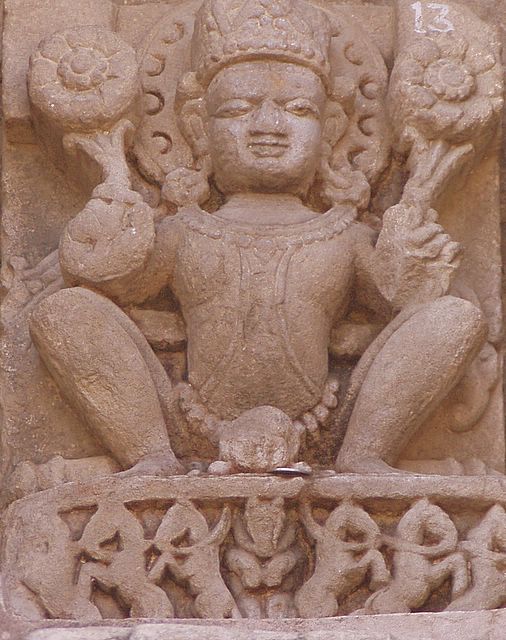
First | Previous Picture | Next Picture | Last | Thumbnails
In Hinduism, Surya is the chief solar deity, son of Dyaus Pita or Indra. He has hair and arms of gold. His chariot is pulled by seven horses, which represent the seven colors of rainbow. Tvashtri is his son, as are the twins Yama and Yami and the Asvins (by Saranya).Another name also used in vedic astrology is Ravi.
A well-known Hindu mode of worship of Surya is done at the rising (and also setting) of the Sun, known as Surya Namaskara (Sun Salutation). Twelve yogic postures are assumed in order with twelve sacred Hindu mantras uttered for each and repeated once (left and right sides) to make twenty-four, corresponding with each hour of the day. It is considered most auspicious by Hindus to do twelve cycles of this (to represent the solar year). Its origins have been traced back to the time of the Ramayana (around 1500 BCE).
The Gayatri Mantra is also associated with Surya. Another hymn associated with Surya is the Aditya Hridayam, recited by the great sage Agastya to Rama on the battlefield before fighting with Ravana.
In Hindu religious literature, Surya is notably mentioned as the visible form of God that one can see every day. Furthermore, Shaivites and Vaishnavas often regard Surya as an aspect of Shiva and Vishnu, respectively. For example, the sun is called Surya Narayana by Vaishnavas. In Shaivite theology, Surya is said to be one of eight forms of Shiva, named the Astamurti.